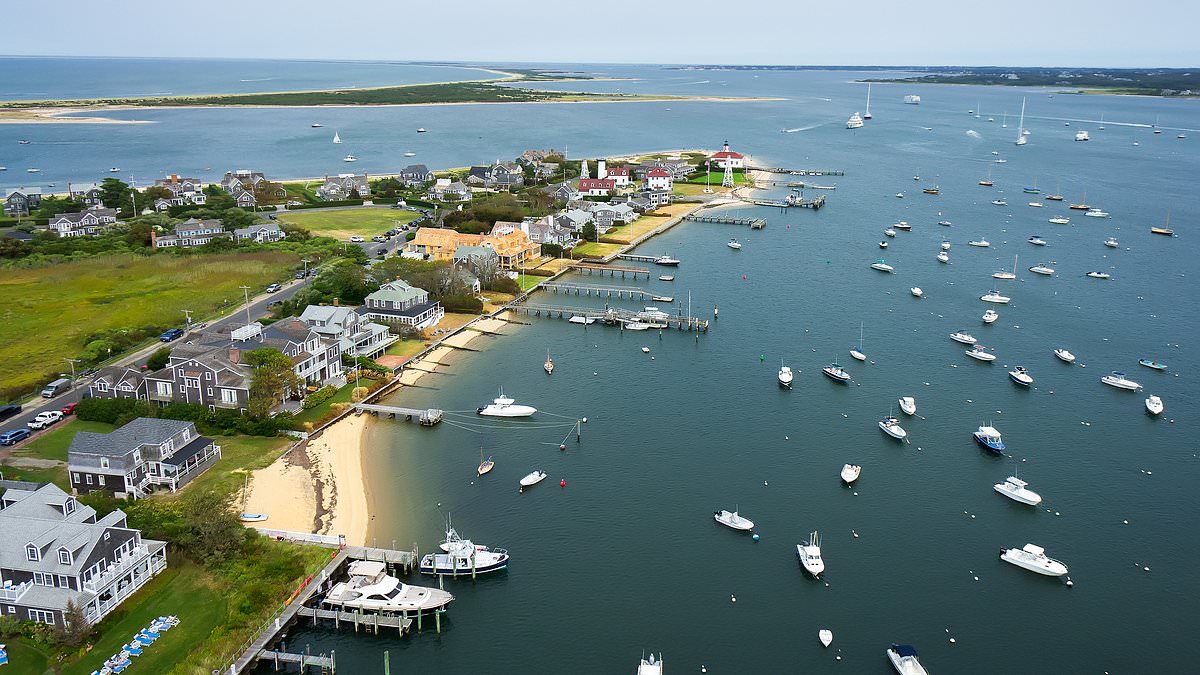Water supplies across a wealthy Massachusetts island have been plagued with toxic ‘forever chemicals’ that cause a slew of health complications.
Nantucket environmental officials have been discovering alarming levels of PFAS in the ritzy enclave’s drinking water.
PFAS, known as per- and polyfluoroalkyl substances, are long-lasting chemicals that linger in the air, soil and water.
They also build up in the human body – causing cancer, high cholesterol, liver damage and pregnancy complications, according to the CDC.
Before experts realized their detrimental health and environmental impact, PFAS were used in various everyday products.
Starting around the 1940s, they were commonly present in non-stick cookware, cleaning supplies, dental floss, candy wrappers and firefighting foam – which easily makes its way into groundwater.
While certain types of PFAS are no longer used in the US, other variations of the potentially poisoning man-made chemicals are actually FDA approved for limited use, according to the agency.
Nantucket has been grappling with concerning levels of PFAS contamination for years, but experts have noticed the problem is more widespread than they thought.
‘The more we test, the more we鈥檙e going to detect,’ Andrew Shapero, Nantucket’s new environmental contamination administrator, told the Boston Globe.
It was previously understood that tainted areas included Nantucket Memorial Airport and Toms Way, located mid-island.
But a recent Department of Environmental Protection investigation revealed private wells are also contaminated.
Last month, Shaper warned the Board of Health one particular location – the intersection Hummock Pond Road and Burnt Swamp Lane – had PFAS levels ‘above the imminent hazard threshold,’ the Nantucket Current reported.
The state standard for the maximum amount of the substances found in drinking water is 20 nanograms of per liter.
At the Hummock Pond and Burnt Swamp intersection, 124 nanograms per liter were detected.
‘That is an extremely concerning concentration to see in drinking water,’ Shapero told the board.
Shapero has been hired with the sole intent of tackling the island’s PFAS problem and minimizing its harm.
While addressing the water supply contamination, Shapero contextualized the issue, explaining places across the country are in the same worrying situation.
‘PFAS have been detected in many wells on the island,’ he told the outlet. ‘PFAS have also been detected in many water sources throughout the country.
‘And so from that perspective, Nantucket has a PFAS problem that is similar to the rest of the country.’
Anywhere from 71 million to 95 million Americans rely on groundwater riddled with detectable levels of the substances, according to the US Geological Survey.
But what makes Nantucket’s dilemma unique is the island’s dependency on groundwater.
‘One is that Nantucket is a sole source aquifer, so all of the water on Nantucket comes from the ground that residents live on top of, whether that鈥檚 private wells or the public water supply,’ Shapero told the Boston Globe.
‘So Nantucket really has no alternative options.’
In 1984, the Environmental Protection Agency (EPA) decided the Nantucket Island Aquifer would be the area’s sole source of drinking water, according to the agency.
‘Certainly, to some extent, there is PFAS in the aquifer,’ Shapero admitted, adding it is no easy feat trying to remove some of those compounds.
‘Getting it out of the aquifer is challenging. Out of people鈥檚 water is a little bit easier. These are forever chemicals, as you know, but filtration is an option.’
The environmental official urged residents to get their blood tested to gauge if they have consumed dangerous amounts.
Two nanograms per milliliter or less of PFAS in one’s blood is considerably safe, he explained.
But if someone has two to 20 nanograms detected – like 91 percent of Americans do – they ‘might have some effects from PFAS,’ Shapero said.
‘On top of that, they have a threshold of 20, where you are in kind of the elevated area,’ he told the outlet.
‘And so that鈥檚 about 9 percent of Americans who really should be keeping an eye on potential health effects from PFAS.’
Ultimately, he encouraged people to test their privately owned wells, as he believes a ‘substantial portion’ of them have contaminated water.
‘It鈥檚 not just a Nantucket problem; it is a statewide and a countrywide problem,’ he asserted.
